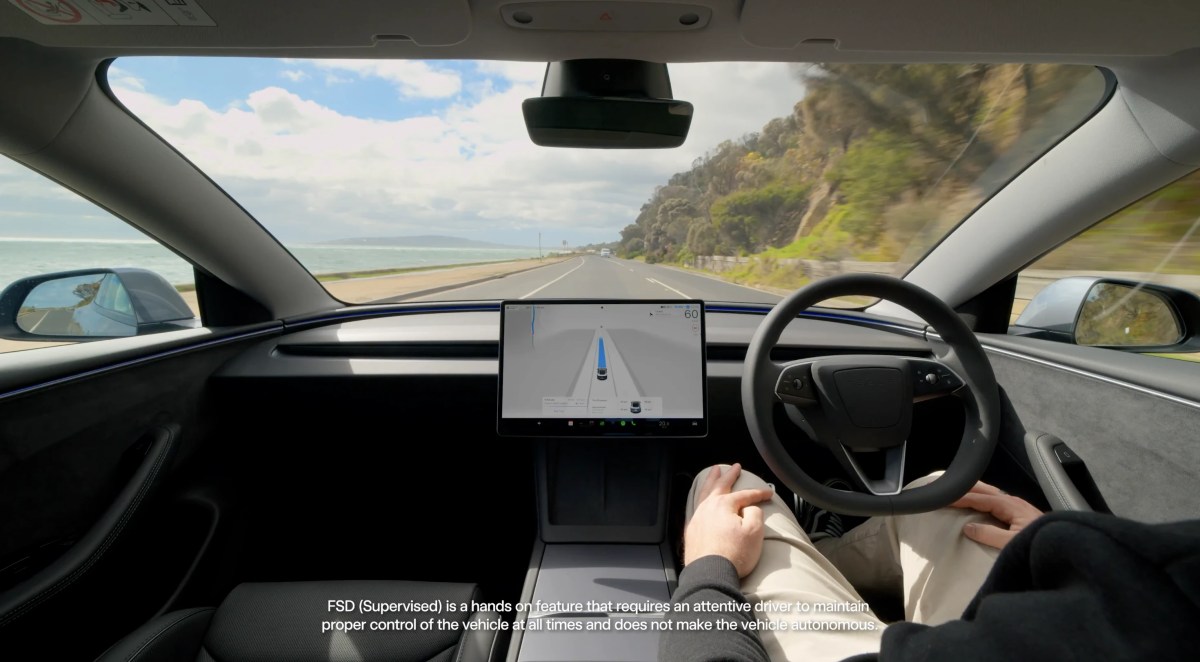Tesla is officially launching on Wednesday its Full Self-Driving (FSD) Supervised in both Australia and New Zealand — four months after it first showed footage from the system being tested in Melbourne and Sydney.
The two countries became the first right-hand drive markets to see the company’s assisted driving system.
In late August, the company started rolling out the system in Australia, offering a 30-day trial for new customers purchasing a Tesla.
Tesla confirmed the feature will initially be available as a paid option costing AUD$10,100 ($6,560).
The company also plans to introduce a subscription option in Australia “soon,” starting at AUD $149 per month.
It will be available in models with the Hardware 4 (HW4) system, while details on the rollout to Tesla vehicles using the previous hardware version remain unknown.
Earlier this year, and following a similar move in China, the company offered the transfer of Full Self-Driving and Enhanced Autopilot to Australian customers purchasing a new Tesla by June 30.
Eligible customers can now upgrade their vehicle to enable FSD, via an over-the-air (OTA) update.
The system is offered as an optional package for all new Tesla vehicles sold in Australia and New Zealand.
Existing customers with eligible vehicles can also upgrade by purchasing the FSD package if they didn’t select Full Self-Driving Capability at the time, as the system was not yet available in the country.
Tesla’s FSD (Supervised) system includes strict usage policies designed to ensure driver attentiveness, with improper use resulting in suspension, triggered when a driver accumulates five “strikeouts.”
The in-cabin camera actively monitors drivers, with behaviors such as looking down or holding a phone likely to result in a strike.
The “strikeout” period has not yet been confirmed in Australia or New Zealand.
However, and according to Tesla‘s owner’s manual for update 2025.32, the EV maker is reducing the suspension for FSD strikeouts from a full week to 3.5 days in the US.
In Australia, the Elon Musk-led company currently sells the Model 3 sedan and the refreshed Model Y SUV.
According to the country chief, Thom Drew, selling the Cybertruck in Australia has “always been on the radar” — however, there’s no concrete timeline for the model’s debut.
Orders for the Model X and Model S were opened in early 2021, with deliveries starting in 2022. Sales were halted a year later, in April 2023, as the brand stopped producing right-hand drive units.
A few days after acquiring Tesla shares in the open market for the first time in five years, Elon Musk wrote on X that he is back to 24hourds-7 days a 7-day-a-week mode across its companies.
Tesla sold 15,350 vehicles in China last week — its strongest weekly sales of the third quarter, marking the second week in a row it set a new high in the country.
The first Tesla Model Y has been delivered to a customer in India, marking the start of retail sales in the country.
Tesla's GigaBerlin chief André Thierig said over the weekend that the factory is increasing production in the remaining third quarter and in the final three months of the year citing increased demand.












